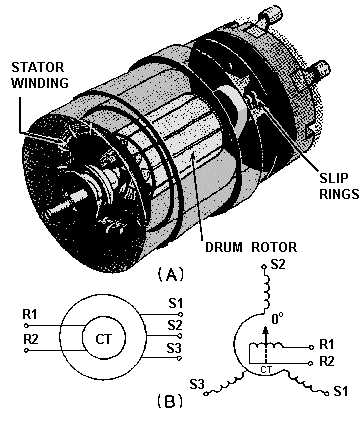1-34
SYNCHROS. Control synchros by themselves cannot move heavy loads. However, they are used to
"control" servo systems, which in turn do the actual movement. Servo systems are covered in depth in the
next chapter in this module.
There are three types of control synchros: the CONTROL TRANSMITTER (CX), the CONTROL
TRANSFORMER (CT), and the CONTROL DIFFERENTIAL TRANSMITTER (CDX). The control
transmitter (CX) and the control differential transmitter (CDX) are identical to the TX and the TDX we
discussed previously except for higher impedance windings in the CX and CDX. The higher impedance
windings are necessary because control systems are based on having an internal voltage provide an output
voltage to drive a large load. Torque systems, on the other hand, are based on having an internal current
provide the driving torque needed to position an indicator. Since we discussed the theory and operation of
the TX and the TDX earlier, we will not discuss their counterparts, the CX and CDX. However, we will
cover the third control synchro, the CT, in depth during this discussion.
CONTROL TRANSFORMERS
A control transformer is just what its name implies-a control synchro device accurately governing
some type of power amplifying device used for moving heavy equipment. Figure 1-24 shows a phantom
view of a typical CT and its schematic symbols.
Figure 1-24.—(A) Phantom view of a typical CT; (B) CT schematic symbols.

